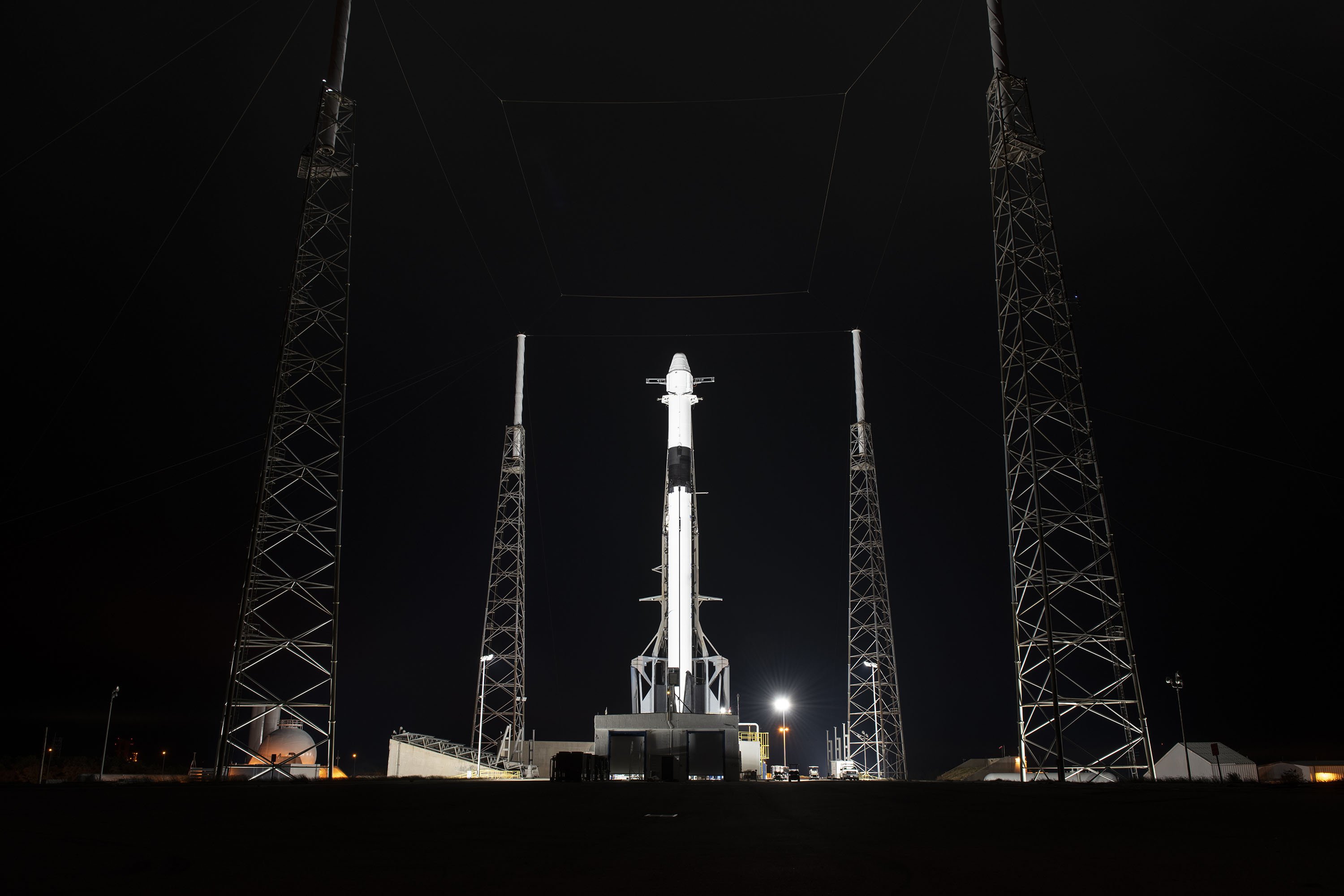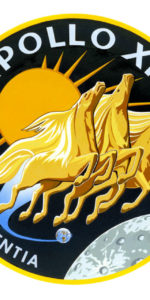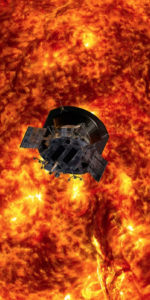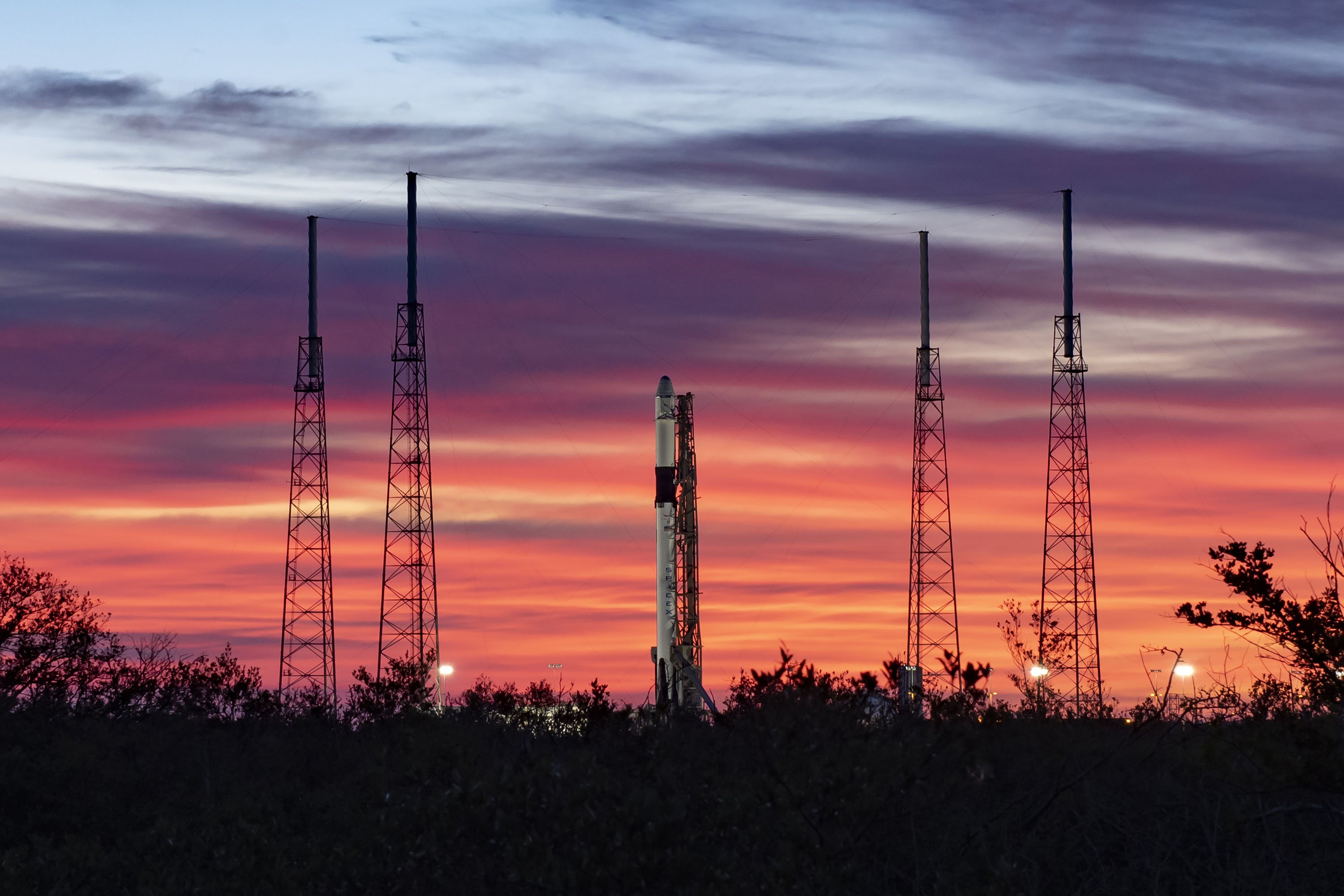
UPDATE Dec 4: The first launch attempt was scrubbed due to unfavorable upper level winds. New launch attempt set for Dec 5 at 12:29pm EST
ORIGINAL STORY: A brand-new Falcon 9 core (tailnumbered “B1059”) will launch a mission to the International Space Station (ISS) on Wednesday, 4 December, when the CRS-19 Dragon rises from Earth to begin its multi-day journey to the sprawling orbital outpost. Liftoff of the 230-foot-tall (70-meter) booster is targeted during an “instantaneous” window at 12:51 p.m. EST from Space Launch Complex (SLC)-40 at Cape Canaveral Air Force Station, Fla. B1059 completed a static fire test of its nine Merlin 1D+ first-stage engines on 26 November.
And the Dragon—flying as part of the Commercial Resupply Services contract between SpaceX and NASA, initially agreed back in December 2008—will arrive at the station early Saturday, 7 December, for a monthlong stay. All told, the Dragon will be carrying around 7,300 pounds (3,310 kg) of equipment, payloads and supplies for the incumbent Expedition 61 crew, including a Japanese hyperspectral imager for emplacement onto the external facility of the Kibo lab.
.
WATCH THE LAUNCH LIVE HERE, coverage begins at about 12:30pm EST
.
Weather conditions for Wednesday’s opening launch attempt are predicted to be around 90-percent favorable, deteriorating to 80 percent in the event of a 24-hour delay to Thursday, 5 December. ”Winds will become more westerly late Tuesday afternoon into Wednesday as dry and weak front moves through,” noted the 45th Weather Squadron at Patrick Air Force Base in its L-3 briefing. “The primary concern is higher surface winds lingering into Wednesday. On Thursday, weather will continue to be favorable over the Spaceport, with increasing upper-level jet stream clouds. The main weather concern will be the thick cloud layer rule due to the jet stream clouds.”
It will be the third flight of this particular Dragon (serial numbered C106), which previously supported CRS-4 in September 2014 and CRS-11 in June 2017. On its most recent flight, C106 became the first Dragon to launch two ISS-bound missions. And on Wednesday, it will become only the second Dragon—after C108, which flew missions in April 2015, December 2017 and July 2019—to record as many as three trips to the sprawling multi-national orbital outpost.
As its name suggests, CRS-19 is the 19th dedicated Dragon cargo mission to be executed under the terms of the Commercial Resupply Services contract with NASA. These contracts were signed back in December 2008 and initially called for 12 Dragon missions to ferry up to 44,000 pounds (20,000 kg) of supplies to successive ISS crews. Three additional flights were secured in early 2015, followed by five more in spring 2016, which will result in the first-phase CRS1 contract closing out with the CRS-20 mission, currently targeted to launch in March 2020. These “additional” Dragons are serving to bridge the gulf between CRS1 and the beginning to the second-round CRS2 contract of missions, which for SpaceX will kick off later in 2020.
Housed in Dragon’s unpressurized “trunk” for CRS-19 is the 1,100-pound (500 kg) Hyperspectral Imager Suite (HISUI) instrument, provided by the Japan Aerospace Exploration Agency (JAXA). Shortly after the spacecraft arrives at the station, HISUI will be robotically extracted from the trunk and installed onto the Exposed Facility (EF) of Japan’s Kibo lab, where it will spend around three years observing the Home Planet at high resolution across all colors of the light spectrum, from visible to shortwave infrared.
In so doing, HISUI will afford an in-flight demonstration for future “hyperspectral” remote-sensing systems, which carries benefits from agriculture to forestry and from oil and gas exploration to understanding coastal erosion. HISUI has a long heritage, extending back to the Advanced Spaceborne Thermal Emission and Reflection Radiometer (ASTER) aboard NASA’s 1999-launched Terra satellite.
The instrument will permit detailed inspections of rocks, soil, vegetation, snow and ice, as well as manmade objects to better understand their unique reflectance spectra. It will be plucked from Dragon’s trunk by the 57.7-foot-long (17.6-meter) Canadarm2 robotic arm, and handed off via the Dextre “hand” to the Kibo lab’s own robotic arm for installation in an Earth-facing (or “nadir”) orientation onto Port 8 of the EF. The HISUI data-storage system will be housed aboard the Kibo pressurized lab. Additionally, a limited quantity of HISUI data will be transmitted to ground stations in near-real-time. It is anticipated that up to 10 GB (equivalent to 18,000 square miles, or 30,000 square kilometers of ground coverage) will be downlinked daily, with a further 300 GB per day, roughly 560,000 square miles or 900,000 square kilometers, physically returned to Earth three or four times per year aboard Dragon cargo vehicles.
Although HISUI is perhaps the most visible aspect of the CRS-19 payload, a wide range of other investigations are packed aboard for Dragon’s ride uphill. All told, it is expected that some 7,300 pounds (3,310 kg) will be hauled to orbit on this mission, with an estimated 5,500 pounds (2,500 kg) returning to Earth in January 2020.
The Confined Combustion experiment will explore the behavior of flames as they spread in differently-shaped confined volumes. In the absence of gravity-driven buoyancy flows, the physics of flame spreading can be better observed in the microgravity environment of low-Earth orbit. Of particular interest are the upward spreading acceleration characteristic of flames. Recent SAFFIRE studies aboard Northrop Grumman Corp.’s Cygnus spacecraft revealed that flames tend to spread more slowly in large confined spaces than in smaller spaces, even if environmental conditions such as oxygen, pressure and flow speed are the same. By understanding flames behavior in confined volumes, numerical models can be developed to anticipate this kind of fire behavior in orbit, as well as leading to improved fire safety codes here on Earth. The experiment will utilize the Burning and Suppression of Solids (BASS) facility aboard the ISS.
“This has been the single most prolific year for ISS National Lab research conducted on the orbiting laboratory to date, as more ISS National Lab-sponsored investigations launched to station in 2019 than in any previous year,” notes the ISS National Lab in a recent press release. “Additionally, ISS National Lab-sponsored investigations exceeded the ISS National Lab’s 50% allocation of crew time dedicated to conducting experiments onboard the space station.”
Elsewhere, other investigations will study mice to better mitigate skeletal muscle and bone loss during space missions, while NASA’s Robotic External Leak Locator (RELL)—launched in 2015 and earlier this year—will gain a robotic tool storage docking station to allow RELL units to be stowed outside the station. As well as making the process of deploying the robotic leak sensor easier, the docking station will eliminate reliance upon crew time and airlock availability to move outside the pressurized hull of the ISS.
Other investigations flying on CRS-19 as part of the ISS National Lab’s sponsored payloads include an experiment from Budweiser, researching the effects of microgravity on the barley malting process.
“Germination is a key step in the life cycle of any plant,” says Gary Hanning, director of global barley research for Anheuser-Busch. “This investigation will look at environmental impacts that affect seed germination.”
“As we move farther and farther from Earth into space, we need to understand how plants will react,” says Michael Roberts, interim chief scientist for the ISS National Laboratory. “We need to develop new ways to propagate plants for food consumption.”
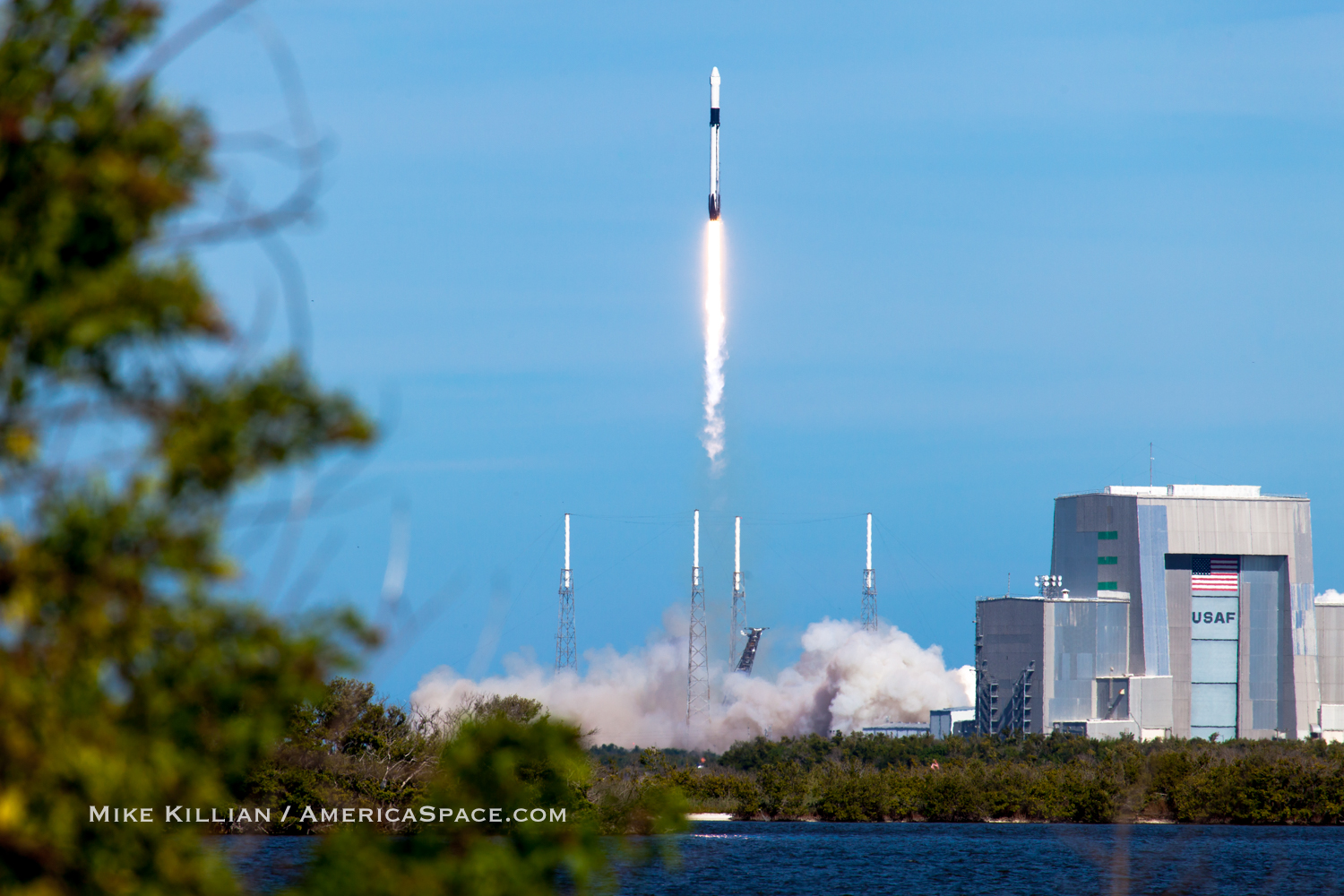
“This launch adds to a tremendous year of research on the orbiting laboratory, and we look forward to these diverse investigations accompanying the hundreds of other experiments that have been conducted on the space station this year,” said ISS National Lab Chief Operating Officer Kenneth Shields. “The demand for and interest in leveraging the space station for innovative research and development continues to increase, as evidenced by this record-setting year of science on station, and we look forward to building on this momentum heading into 2020 and beyond.”
Assuming an on-time launch Wednesday, the CRS-19 Dragon is due to arrive in the vicinity of the space station early Saturday. Following capture by Canadarm2, the cargo vehicle will be robotically maneuvered over to the nadir port of the Harmony node, where it will be berthed for a monthlong stay.
Its arrival will come in the midst of a busy winter for the Expedition 61 crew—Commander Luca Parmitano of Italy, Russian cosmonauts Aleksandr Skvortsov and Oleg Skripochka and U.S. astronauts Christina Koch, Drew Morgan and Jessica Meir—who recently supported two sessions of Extravehicular Activity (EVA) to repair and revitalize the Alpha Magnetic Spectrometer (AMS)-2.
And coming up later in December is the long-awaited unpiloted orbital flight test of Boeing’s CST-100 Starliner, preparatory to the first Commercial Crew missions. Which will be followed by SpaceX’s in-flight abort test, both missions of which are critical to getting crews flying with both companies starting in mid-2020.
.
.
FOLLOW AmericaSpace on Facebook and Twitter!
.
.




